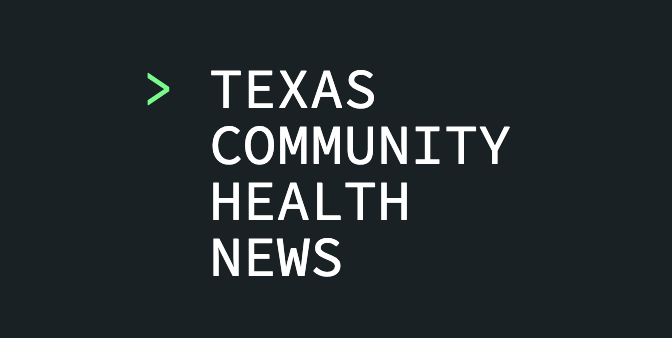 By Carolyn Shapiro
By Carolyn Shapiro
At Texas State University, the Translational Health Research Center has received more than $1 million in grants to collect public health data, study it and disseminate information that benefits Texans.
This past spring, journalism students in the university’s School of Journalism and Mass Communication began helping with the information part. Kym Fox, who oversees the journalism program, secured a portion of the research center’s grant funding to create Texas Community Health News. She turned a data journalism class into a reporting team that develops graphic elements and writes stories derived from the research.
The Texas Community Health News website showcases their work for the public and allows access to news outlets across the state that want to use it. The health news team, led by Fox and the professor who teaches data journalism, also produces custom data visualizations for other publications focusing on stories with health components.
“We’re are trying to figure out what’s useful to media outlets,” Fox said. “We’re creating this from whole cloth.”
A primary partner of TCHN is Public Health Watch, a nonprofit investigative news organization focused on “threats to America’s wellbeing,” according to its website. Texas State students also produce stories for Texas Public Radio, which operates stations broadcasting to the San Antonio area and West Central Hill Country.
“We’re seeing the potential for this to grow in a bunch of different ways,” Fox said. “I want to see this be a thing that gets our students in the newsroom and that gets better public health coverage out there in the community.”
TCHN has $200,000 in funding through spring 2024, Fox said. It supports three faculty working full-time this summer and another part-time staffer to do social media. It’s also paying $18 an hour for two summer interns, one embedded at Texas Public Radio and the other paired with Daniel Carter, the TCHN data expert.
During spring and fall semesters, one intern will work about 20 hours a week. Students must apply for the internships. For the data journalism course, they get three credits.
“The intern component is really important to me,” Fox said, “because that's part of the path to getting students in newsrooms.”
The data informs not only health-related stories but almost any topic affecting Texans’ quality of life, Fox explained. Student reporters have used the research for stories about homelessness, food deserts and a baby abandonment law in Texas. They also want to delve into the distribution of the opioid overdose-reversal drug Narcan, Fox said.
In the journalism capstone course, students can expand their reporting projects by adding a data component. The data gives them a starting point, and they need to do interviews and additional reporting from there, Fox said.
“One of my missions in every class is let's get the students to learn some journalism, but also learn some things of the world,” Fox said. “So they need data that matters.”
Daniel Carter, the associate professor who teaches data journalism and specializes in digital media, is pursuing a public records request with his intern this summer. That student, Levi Long, also handles social media content, posting short stories on Facebook and Instagram about, for example, the landscape for abortion access in Texas a year after the U.S. Supreme Court’s overturning of the Roe v. Wade decision.
“The students basically expand our capacity in a way that's really important,” said Carter, who has a doctorate in information science. “Being able to have a little bit of that load taken off me is huge and helps me work on bigger projects with some of our other partners that are more long term, more in-depth, more investigative.”
Those partners include Public Health Watch and other small news organizations that lack the resources for digging into data that they can localize, use to enhance their reporting or build stories on, he said. “We’re trying to allow that level of organization to do more.”
Fox worked for the San Antonio Express-News before switching to teach 23 years ago. Texas State, located outside Austin, serves primarily Latino and Black students, many of them the first generation in their families to go to college, Fox said.
Many of them also need to work for money in the summer, so it’s a challenge for them to find time to do internships — particularly unpaid ones. That was another spark for Fox to start Texas Community Health News.
“My students are the ones who need to be in newsrooms, because they're from the community, and they are the voices that we often don't hear,” she said. “I'm going to find a pathway for these students to be in newsrooms and to do the work that needs to be done in journalism.”
They have produced some valuable stories during their classes, as well. Students in a multimedia journalism course did a project the year after the Robb Elementary School shooting in Uvalde, Texas, for which they interviewed the youngsters’ families. The piece ran on public radio stations across the state and was picked up by the Austin American-Statesman.
“It was so powerful for them, which we knew it would be, but also they did great work,” Fox said.
A few Uvalde parents gave feedback on the students’ reporting skills.
“Some of them said they asked better questions than the pros,” Fox said, “because they listen differently, and their minds go in different places.”
